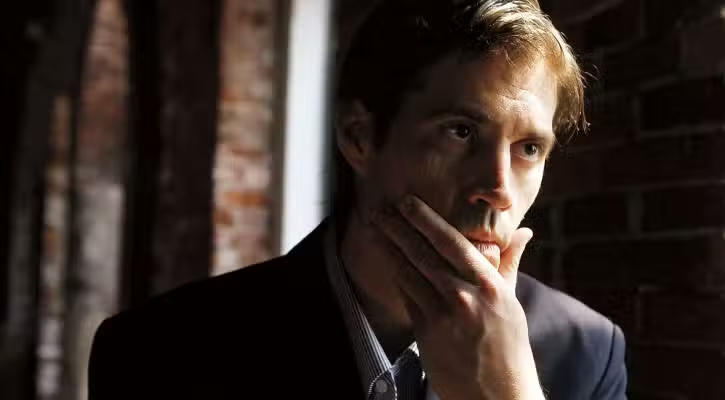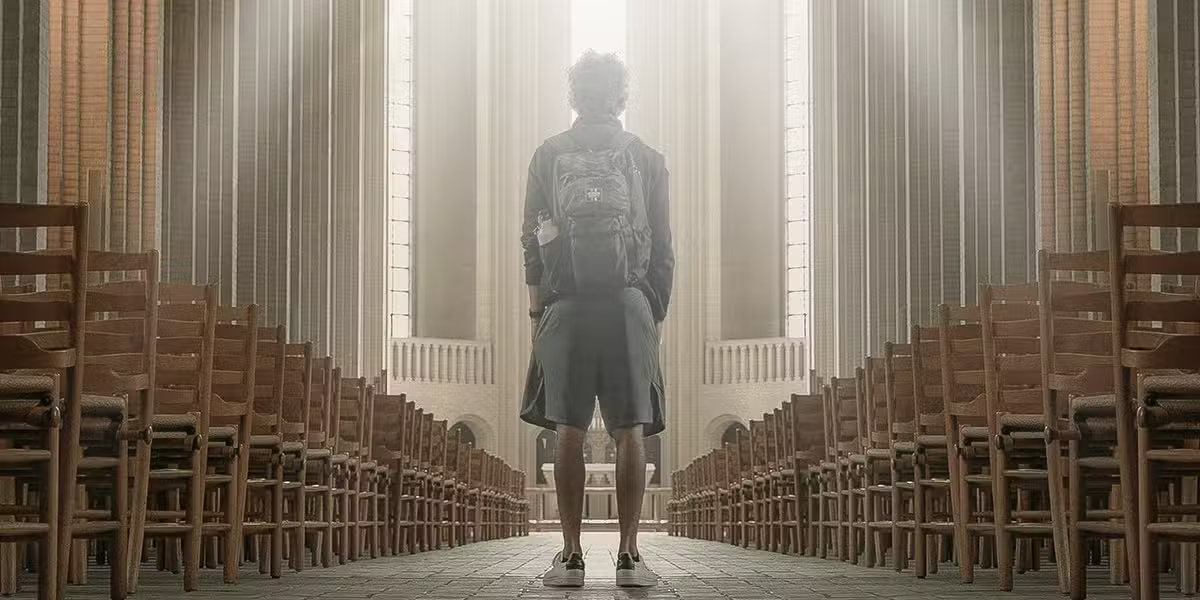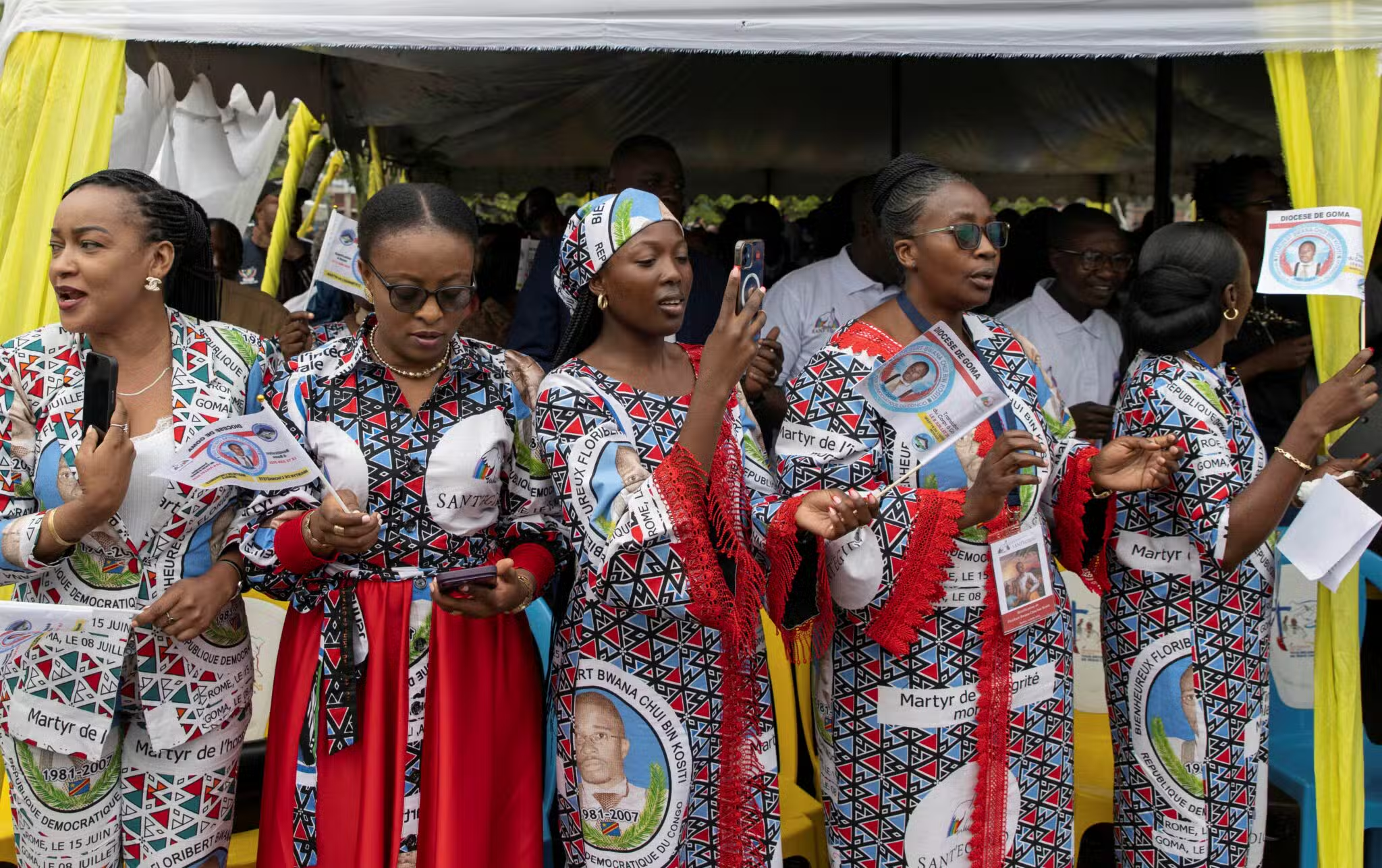He was murdered by ISIS as he exposed to the world the suffering of the Syrian people. His loved ones look back on his life and legacy.
On August 19, 2014, a troubling video, entitled “A Message to America, ” was uploaded to the Internet. Freelance journalist James Foley, clad in orange, kneels in front of a camera. In halting speech, he delivers a statement condemning the US government.
“I wish I could have the hope of freedom, of seeing my family once again, but that ship has sailed, ” he says. His executioner, clad entirely in black, then identifies himself as a member of the Islamic State and spouts anti- American rhetoric before decapitating his prisoner. The video concludes by threatening further murders.
Thousands of miles away, in Rochester, New Hampshire, John and Diane Foley receive the terrible news the government has confirmed the video is authentic. Their oldest son, who two years prior had been captured in Syria, will not be coming home. Shock becomes horror. Sadness becomes devastation.
As news of the horrific murder spreads through the close-knit community, Father Paul Gousse, pastor of Our Lady of the Holy Rosary, the Foley family church, jumps into his car and speeds to the Foley house to mourn, to pray, to console.
“I’ll never forget it, ” he says sadly. “Diane came and hugged me and said, ‘Father, please pray for me that I don’t become bitter. I don’t want to hate.’ That’s the kind of person she is. That’s the kind of family they are. ”
That very night, the family issued a statement on Facebook. “We have never been prouder of our son Jim. He gave his life trying to expose the world to the suffering of the Syrian people. We implore the kidnappers to spare the lives of the remaining hostages. Like Jim, they are innocents. . . . We thank Jim for all the joy he gave us. He was an extraordinary son, brother, journalist, and person. ”
A Strong Faith Base
James (Jim) Foley was born October 18, 1973, in Evanston, Illinois, the oldest of five children born to Dr. John and Diane Foley. The family relocated to Wolfboro, New Hampshire, when Jim was a young boy. According to Jeremy Osgood, a friend of Jim’s since the first grade, “There seemed to be two absolutes in Jim’s life his faith and his family, both of which gave him an incredible foundation. It was a well of strength and courage for him in a time of need. It was a source of compassion for others. ”
Osgood shared many of his memories of Jim from his days at the Carpenter School, the elementary school where they met, to attending the prom at Kingswood Regional High School, which Jim proudly attended wearing a gaudy 1970s tuxedo. His prom date was one of the teachers.
“Jim always had a knack for reading people. He was a student of human nature, who could blend into any situation and used this ability to build people up, and not tear them down, ” Osgood says.
He believes this came from Jim’s upbringing. Ann McGregor, Jim’s former babysitter and longtime family friend, agrees. She shares one poignant memory from his childhood, which, according to McGregor, “accentuates the life Jimmy lived and died for. “
As a teen, McGregor was invited to the Foley house on January 6 to an “Epiphany party, ” where each of the five young children brought gifts to the baby Jesus in the manger, she recalls.
“At a young age, the Foley children were taught to bring their gifts to Christ, to follow the light that leads us to Christ, wherever that may lead, and to bow down to Christ in service to him, ” she says. She adds that Jim’s death was the epitome of that Epiphany party.
“Jim went bearing his gifts for the oppressed, the impoverished, the neglected, the deprived, the unloved, ” she says. “He traveled from afar like the Wise Men and he laid down his gift, his life.
“Jim was loved internationally, but first and foremost, Jim was loved by God his Father, ” she continues. “Jim was a light and he took this light into some of the world’s darkest places, where few of us would dare to go, and his light never faded. His light will forever remain bright in my life. ”
An Expanding Vision
After graduating from Kingswood Regional High School, Jim attended Marquette University, a Jesuit school in Milwaukee steeped in a tradition of social justice. It was at Marquette that Jim first turned his attention to those less fortunate.
“At Marquette, Jim began to realize that there were others who had not had what he had as a child, ” Father Gousse says. “His mother told me once that the more Jim experienced poverty, the more his heart grew. ”
Tom Durkin, a friend of Jim’s during his days at Marquette, recalls that Jim “always wanted to know more, to learn more, to understand more. ”
In 1996, Jim graduated from Marquette, and went to work as a teacher in Teach for America, a nonprofit organization whose mission, according to its website, is “to build the movement to eliminate educational inequity ” by recruiting recent college graduates to teach in underprivileged areas throughout the United States for a minimum of two years. In the four years he was involved in Teach for America, Jim taught middle school in Phoenix, Arizona.
Anders Hopperstead, geographic information system analyst at the Ministry of Agriculture in British Columbia, befriended Jim during his days in Teach for America. He recalls Jim as a fun-loving man who was always very much attracted to the stories of others’ lives.
“He instantly called you ‘brother,’ ” Hopperstead says with a smile. “He was a great listener. He always wanted to hear everyone’s stories, and he made you feel like you were the only person in the world. ”
James Foley is pictured in Aleppo, Syria, in November 2012, the same month in which he was captured while working as a freelance journalist covering the country’s civil war. (CNS photo/courtesy Nicole Tung)
Uncovering People’s Stories
In the mid-2000s, Jim changed his career focus to journalism. He enrolled in the MFA Program for Poets & Writers at the University of Massachusettsâ Amherst, where he graduated in 2003. He continued at Northwestern University’s Medill School of Journalism, graduating in 2008. While studying in Chicago, Jim also taught English to inmates at the Cook County Jail.
One year later, Jim began working for a USAID-funded development project in Baghdad, where he helped organize conferences and training seminars for a program designed to rebuild Iraq’s civil service. In 2010, he began his career as a freelance reporter and was embedded with US troops in Iraq.
The following year, he began to work for GlobalPost, a Boston-based online news organization whose mission, according to its website, is to “redefine international news for the digital age. ”
At the October 18, 2014, memorial Mass held on Jim’s 41st birthday, Father Marc Montminy, pastor of St. Michael Parish in Exeter, Massachusetts, and close family friend, explained in a homily, “It was people’s stories the stories of mechanics, of oil workers, of mothers and fathers people living in the extremes ” that compelled Jim to write.
While working at GlobalPost, Jim traveled to Libya to cover the uprising against Libyan leader Muammar Gaddafi, embedding himself with rebel fighters. On April 5, 2011, Jim, together with American journalist Clare Morgana Gillis, Spanish photographer Manu Brabo, and South African-born British photojournalist Anton Hammerl, was detained near Brega, Libya, by Gaddafi supporters. Hammerl was shot; the other three were captured.
A Final Good-bye
On Thanksgiving Day 2012, Foley was captured alongside British journalist John Cantlie in northwest Syria, close to the Turkish border. For two years, GlobalPost, the US government, and other agencies tried to locate his whereabouts, but were unable to free him. His family, his friends, and his parish all prayed for Jim to come home. It was not to be.
Jim’s final correspondence came in June 2014, when Danish photojournalist and fellow hostage Daniel Rye Ottosen was released by ISIS. Jim had asked Ottosen to commit a letter to memory and relay it to his family. As soon as he was released, Ottosen called Diane Foley and dictated Jim’s final letter: “I know you are thinking of me and praying for me. And I am so thankful. I feel you all, especially when I pray. I pray for you to stay strong and to believe. I really feel I can touch you, even in this darkness when I pray, ” Jim states.
The letter goes on to speak to individual members of his family, offering a sort of goodbye.
“Jim was a very brave man, ” states Philip Balboni, CEO and cofounder of GlobalPost. “In no small part, that bravery comes from the two people who raised him John and Diane Foley. They are truly remarkable people. ”
Balboni notes that sitting atop his desk is a photograph of Foley shortly after he was released from captivity in Libya. “I shall always deeply regret that we couldn’t deliver that moment one more time, ” he says sadly. “I never stopped believing that we would get Jim out of Syria. And so the horror and the suddenness of [his execution] was really quite devastating. “
Balboni notes that GlobalPost has continued to unravel the details of Jim’s detainment and ultimate execution. “From our investigation, we came to know something else about his character that he was deeply admired by his fellow captives. Jim was regularly tortured by the Islamic State, but his captors never broke his spirit. It was Jim Foley who gave the others courage in that windowless room in Raqqa, Syria. ”
Although the final details of why Jim was the first American journalist to be executed have not been made clear, Michael Foley, his younger brother by two years, has little doubt.
“I know in my heart he put himself first, ” Michael said during his eulogy at Jim’s memorial Mass. “I’ll never make complete sense of why Jim died, but I know that’s not for me to understand. But he did not die in vain. He reminded us that good does triumph over evil. ”
Michael noted that growing up, Jim “was certainly the teacher, whether or not we were willing to learn. His final lesson came in the form of his act of martyrdom. Jim died because of what he believed in.
“Jim died for his faith. Jim died because he was American. He represented the core values we believe in. He died so that others may live. ”
The Strength of His Faith
After his capture, Jim’s focus shifted. “Jim told me, ‘Once I saw Anton lying there, everything changed,’ recalls Father Montminy. “After that point, he wanted to seek justice and peace. ”
For the next 44 days, Jim was held prisoner. But his faith never faltered. According to Gillis, who spent many days in a cell with him, Jim’s faith was evident even in the darkest moments.
Speaking from an Internet café in Istanbul, Gillis acknowledges that “in that situation, anyone would pray sort of a ‘Get me out of here’ type of prayer. But not Jim. I say he was very familiar with how to supplicate rather than pray. ”
According to Gillis, Jim would often pray with her “for things we could tangibly feel. Prayers such as, ‘Give us the strength to endure what this day brings’ or ‘Give us the wisdom to face our captors’ or ‘Strengthen our families’ those were our prayers. ”
For Gillis, who describes herself as not very religious, “it was very helpful and moving to see how these supplications were effective.
“Gillis notes that during their captivity, she only saw Jim cry twice both while he was praying for the lives of others and never did she see him angry. “He never said an angry word to anyone even to those who were holding us captive, ” she recalls. Having met him only weeks before their capture, Jim’s faith came as a bit of a surprise to Gillis. “He never carried his faith heavily. He kept it a little close to himself, ” she says.
On May 18, 2011, Jim, Gillis, Manu Brabo, and another British journalist who had also been captured in Libya, were released without explanation. After his release, Jim wrote an article for Marquette Magazine, in which he spoke of his experiences in captivity.
“I began to pray the rosary. It was what my mother and grandmother would have prayed, ” he wrote. “I said 10 Hail Marys between each Our Father. It took a long time, almost an hour, to count 100 Hail Marys off on my knuckles. And it helped to keep my mind focused.
“If nothing else, prayer was the glue that enabled my freedom, an inner freedom first, and later, the miracle of being released during a war in which the regime had no real incentive to free us, ” his article continued. “It didn’t make sense, but faith did. ”
A Missionary Heart
Those close to Jim all agree that when he returned home from captivity, there was a restlessness that grew within him. By early 2012, Jim began a series of trips in and out of Syria, chronicling for GlobalPost the unfolding of events as they occurred in Syria. Several people, including his siblings, were not pleased.
“Just one week before Jim went back to Syria, I had supper with the family, ” recalls Father Gousse, their parish priest. “And during the course of the conversation, I looked at him and said, ‘Jim, why are you going back?’ His response, and I’ll never forget it, was, ‘Father, I need to go back because the world needs to know the plight of people who are being walked on like grass underfoot.’
“It was then I knew that he had a missionary heart, ” Father Gousse continues. “Jim’s missionary and evangelizing heart was willing to go into the darkest of places where no one else was willing to go. Jim died for freedom. Jim died for truth. But the fact of the matter is that Jim died because he wanted the world to know what the Syrian people were experiencing, ” he continues.
“If I had to stand here and say what was the most important lesson Jim taught, it was at the end of his life. He taught us the meaning of life by being willing to lay down his own life for others. ”
Honoring Jim’s Legacy
A photo of slain journalist James Foley is displayed during a memorial Mass celebrated at Our Lady of the Holy Rosary Church in Rochester, N.H. Foley was captured by Syrian extremists in November 2012 and killed August 19. (CNS photo/Donis Tracy)
Following his death, Marquette University established the James Foley Scholarship in the J. William and Mary Diederich College of Communication in his honor.
Marquette President Michael Lovell issued a statement reading in part, “It is with great respect for James Foley that we at Marquette will continue to intensify our focus on creating future citizens who live their lives for others, work toward social justice, and improve our city, country, and world. . . .We will never forget James Foley. ”
In addition, the James W. Foley Legacy Fund was established by John and Diane Foley. According to its website, the fund’s mission is threefold: hostage support, conflict reporting, and youth education.
“The James W. Foley Legacy Fund will honor what Jim stood for by focusing on three areas he was passionate about: building a resource center for families of American hostages and fostering a global dialog on governmental policies in hostage crises; supporting American journalists reporting from conflict zones; and promoting quality educational opportunities for urban youth, ” the site explains.
“Jim did not die in vain. Please help us build on his memory. Diane and John Foley. ”








